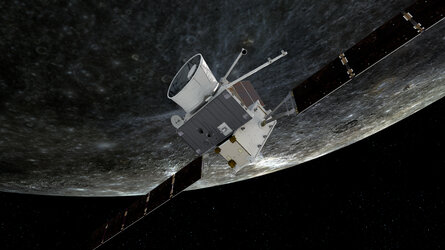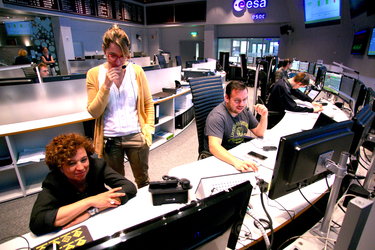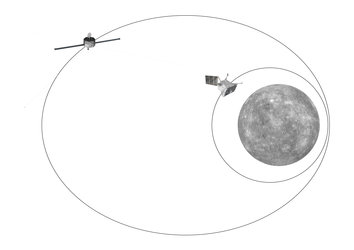Accept all cookies Accept only essential cookies See our Cookie Notice

About ESA
The European Space Agency (ESA) is Europe’s gateway to space. Its mission is to shape the development of Europe’s space capability and ensure that investment in space continues to deliver benefits to the citizens of Europe and the world.
Highlights
ESA - United space in Europe
This is ESA ESA facts Member States & Cooperating States Funding Director General Top management For Member State Delegations European vision European Space Policy ESA & EU Space Councils Responsibility & Sustainability Annual Report Calendar of meetings Corporate newsEstablishments & sites
ESA Headquarters ESA ESTEC ESA ESOC ESA ESRIN ESA EAC ESA ESAC Europe's Spaceport ESA ESEC ESA ECSAT Brussels Office Washington OfficeWorking with ESA
Business with ESA ESA Commercialisation Gateway Law at ESA Careers Cyber resilience at ESA IT at ESA Newsroom Partnerships Merchandising Licence Education Open Space Innovation Platform Integrity and Reporting Administrative Tribunal Health and SafetyMore about ESA
History ESA Historical Archives Exhibitions Publications Art & Culture ESA Merchandise Kids Diversity ESA Brand CentreLatest
Space in Member States
Find out more about space activities in our 23 Member States, and understand how ESA works together with their national agencies, institutions and organisations.
Science & Exploration
Exploring our Solar System and unlocking the secrets of the Universe
Go to topicAstronauts
Missions
Juice Euclid Webb Solar Orbiter BepiColombo Gaia ExoMars Cheops Exoplanet missions More missionsActivities
International Space Station Orion service module Gateway Concordia Caves & Pangaea BenefitsLatest
Space Safety
Protecting life and infrastructure on Earth and in orbit
Go to topicAsteroids
Asteroids and Planetary Defence Asteroid danger explained Flyeye telescope: asteroid detection Hera mission: asteroid deflection Near-Earth Object Coordination CentreSpace junk
About space debris Space debris by the numbers Space Environment Report In space refuelling, refurbishing and removingSafety from space
Clean Space ecodesign Zero Debris Technologies Space for Earth Supporting Sustainable DevelopmentLatest
Applications
Using space to benefit citizens and meet future challenges on Earth
Go to topicObserving the Earth
Observing the Earth Future EO Copernicus Meteorology Space for our climate Satellite missionsCommercialisation
ESA Commercialisation Gateway Open Space Innovation Platform Business Incubation ESA Space SolutionsLatest
Enabling & Support
Making space accessible and developing the technologies for the future
Go to topicBuilding missions
Space Engineering and Technology Test centre Laboratories Concurrent Design Facility Preparing for the future Shaping the Future Discovery and Preparation Advanced Concepts TeamSpace transportation
Space Transportation Ariane Vega Space Rider Future space transportation Boost! Europe's Spaceport Launches from Europe's Spaceport from 2012Latest
Simulation of BepiColombo's sixth flyby Mercury views
Thank you for liking
You have already liked this page, you can only like it once!
During its sixth flyby of Mercury, the ESA/JAXA BepiColombo mission will fly directly over the planet's north pole. While doing so, the spacecraft will snap photos of the cratered surface below, providing the most up-to-date views of Mercury's ‘top half’ since NASA's Messenger finished its mission in 2015.
This simulation shows the surface of Mercury passing below the spacecraft as it will be viewed by one of its monitoring cameras, M-CAM 1. BepiColombo will approach the planet from its night side, so the surface to the right of the ‘terminator’ which divides night and day on the planet – the blue line visible from around 25 seconds into the video – will be shrouded in darkness.
This flyby will provide the first close views in ten years of mysterious north pole craters whose insides are cast in permanent shadow. Excitingly, these craters are thought to contain water ice. M-CAM 1 will take some extra-long exposure images in the hopes of revealing more of what's inside, dimly lit by sunlight reflected from the craters' walls.
The ‘enhanced colour’ planetary surface shown in this simulation is a fake-colour composite map which highlights differences in surface composition, based on Messenger observations (Denevi et al., 2018). While a complete greyscale map is available, the lack of complete multi-colour data from around the planet's north pole means that this surface model has a gap of coverage in that region.
The simulated video was prepared by Emanuele Simioni with SOIM, short for Simulator for Operation of Imaging Missions. This software uses the most up-to-date mission data to calculate the exact position of Mercury, the spacecraft and the instrument geometry, determining what each of its cameras will see.
In late 2026, the ‘stacked’ BepiColombo spacecraft will arrive at Mercury and release both ESA's Mercury Planetary Orbiter (MPO) and JAXA's Mercury Magnetospheric Orbiter (Mio) into polar orbits around the planet. This means that both orbiters will have full coverage of the planet's poles with their various instruments. MPO's cameras and spectrometers will improve upon Messenger's maps, providing global surface coverage in higher resolution and expanding to more wavelengths of light.
-
CREDIT
ESA/BepiColombo, E. Simioni (INAF) -
ACKNOWLEDGEMENTS
Simulation by Emanuele Simioni (INAF), using SOIM (Simulator for Operation of Imaging Missions) developed by INAF. Mercury enhanced colour basemap (Denevi et al., 2018): NASA/Johns Hopkins APL/Carnegie Science. Spacecraft animation & video assembly: ESA/ATG Europe. -
LICENCE
CC BY-SA 3.0 IGO or ESA Standard Licence
(content can be used under either licence)
-
Closed captions available Captions and subtitles are available (automatically generated by YouTube) - select your language using the YouTube player controls. A non-YouTube version is available using the 'download' button above.
-
Animation
-
-
-

BepiColombo's sixth Mercury flyby: the movie

BepiColombo Mercury flyby

Teams at mission control in BepiColombo simulation

BepiColombo orbits















 Germany
Germany
 Austria
Austria
 Belgium
Belgium
 Denmark
Denmark
 Spain
Spain
 Estonia
Estonia
 Finland
Finland
 France
France
 Greece
Greece
 Hungary
Hungary
 Ireland
Ireland
 Italy
Italy
 Luxembourg
Luxembourg
 Norway
Norway
 The Netherlands
The Netherlands
 Poland
Poland
 Portugal
Portugal
 Czechia
Czechia
 Romania
Romania
 United Kingdom
United Kingdom
 Slovenia
Slovenia
 Sweden
Sweden
 Switzerland
Switzerland


























